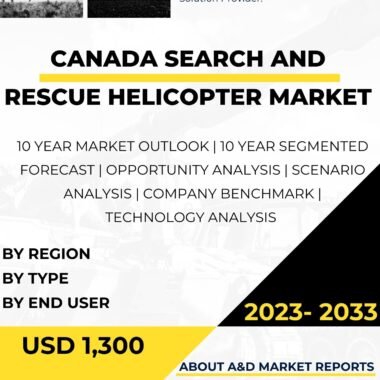Description
The United States Search and Rescue (SAR) helicopter program is a critical component of the nation’s emergency response and disaster management capabilities. SAR helicopters are specialized aircraft equipped to locate, rescue, and evacuate individuals in distress or life-threatening situations. These versatile helicopters are utilized in a wide range of scenarios, including natural disasters, medical emergencies, maritime incidents, and remote wilderness rescues. Operating under various agencies, such as the U.S. Coast Guard, U.S. Air Force, National Guard, and civilian organizations, SAR helicopters play a vital role in saving lives and providing rapid assistance during emergencies.
The U.S. Coast Guard is a primary operator of SAR helicopters, with its Aviation Survival Technician (AST) crews trained in search and rescue operations. The Coast Guard employs a variety of helicopters, including the MH-60 Jayhawk and MH-65 Dolphin, to perform maritime rescues in challenging environments such as rough seas, extreme weather, and low visibility conditions.
MH-60 Jayhawk helicopters are deployed on the Coast Guard’s large cutters and at air stations, offering extended range and endurance for long-distance search and rescue missions. These helicopters can operate over vast expanses of water and are equipped with state-of-the-art avionics and sensor systems to aid in locating distressed vessels or individuals.
The MH-65 Dolphin, on the other hand, is a versatile multi-mission helicopter equipped with a rescue hoist, searchlight, and infrared sensor system. These helicopters are well-suited for rescues in confined spaces, such as narrow canyons or dense forests, where precision flying and maneuverability are essential.
The U.S. Air Force and National Guard also play a crucial role in SAR operations, utilizing helicopters like the HH-60 Pave Hawk and UH-60 Black Hawk. These helicopters are capable of performing both combat and search and rescue missions, providing the military with a versatile asset for a range of operational requirements.
The HH-60 Pave Hawk is a specialized version of the Black Hawk, equipped with additional features for combat search and rescue (CSAR) missions. These helicopters are used to recover downed aircrew members in hostile environments, often behind enemy lines.
In the civilian sector, SAR helicopters are operated by various organizations, including law enforcement agencies, state and local governments, and private companies. These helicopters are instrumental in locating missing persons, conducting aerial surveillance during disasters, and performing medical evacuations in remote areas.
The Los Angeles County Fire Department, for example, operates a fleet of Sikorsky S-70 Firehawks for fire suppression and SAR missions. These helicopters are equipped with advanced fire-fighting systems, hoists, and medical equipment, enabling the crew to swiftly respond to emergencies in urban and wilderness environments.
In addition to traditional rotorcraft, the United States is exploring the use of unmanned aerial vehicles (UAVs) or drones for SAR missions. UAVs equipped with thermal imaging cameras and other sensors can quickly cover large areas and assist in locating missing persons or survivors in disaster zones.
One notable example is the use of drones in hurricane response and recovery efforts. After Hurricane Harvey struck Texas in 2017, UAVs were deployed to survey damaged areas, assess flood levels, and identify people in need of rescue. These drones provided critical real-time data to response teams and helped direct SAR operations efficiently.
Moreover, the integration of SAR helicopters with advanced technology and data analytics enhances their effectiveness. The use of forward-looking infrared (FLIR) cameras, radar systems, and GPS-based navigation aids enables SAR crews to locate and rescue individuals even in challenging conditions.
Additionally, SAR helicopters can be equipped with specialized rescue equipment, such as rescue hoists, flotation devices, and medical kits. This equipment allows crew members to perform swift and safe extractions of individuals from hazardous environments, including mountains, seas, and heavily forested regions.
Training and expertise are fundamental aspects of SAR helicopter operations. Search and rescue crews undergo rigorous training, including helicopter operations, medical skills, survival techniques, and communication procedures. These highly skilled teams are prepared to respond to a wide range of emergencies and adapt to dynamic and unpredictable situations.
SAR helicopters often work in coordination with other emergency responders, such as ground search teams, law enforcement, and medical personnel. Effective communication and coordination between different agencies are essential to ensure efficient and successful rescue missions.
The United States SAR helicopter program faces various challenges, including funding constraints, the increasing frequency and intensity of natural disasters, and the need to keep pace with technological advancements. Adequate investment in SAR capabilities is crucial to maintain readiness and effectiveness in responding to emergencies.
Moreover, as the climate changes, extreme weather events and disasters are becoming more frequent and severe, placing greater demands on SAR resources. Preemptive planning and training are essential to ensure the quick and effective deployment of SAR helicopters when disasters strike.
In conclusion, the United States Search and Rescue helicopter program is a vital and multifaceted component of the nation’s emergency response and disaster management capabilities. SAR helicopters, operated by various agencies and organizations, play a crucial role in locating, rescuing, and evacuating individuals in distress across diverse environments.
From maritime rescues in treacherous seas to combat search and rescue missions in hostile environments, SAR helicopters are a lifeline for those in need. Their ability to access remote and challenging areas, deploy advanced technology, and work in coordination with other emergency responders makes them a critical asset in safeguarding lives and providing rapid assistance during emergencies.
As the United States continues to face evolving challenges, the SAR helicopter program must remain adaptable, well-funded, and technologically advanced to meet the demands of modern emergencies and disaster scenarios. The commitment to investing in SAR capabilities ensures that these dedicated and skilled crews can continue to save lives and serve the nation effectively in times of crisis.




